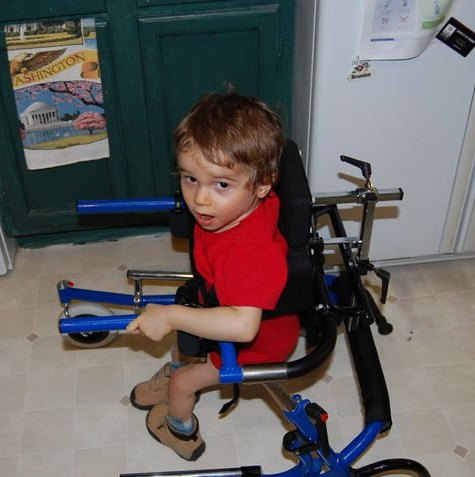An easy way to remember the difference
The difference between a “diagnosis” and a “disability” can be hard to understand. These words often get mixed up. To make things more confusing, sometimes you may see or hear the terms “disability category” and “eligibility category” used interchangeably.
An easy way to remember the difference is:
- Doctors give a diagnosis
- School evaluators use diagnoses to help determine disability categories
- ARD Committees use disability categories to help determine eligibility for special education services
Many children with a doctor’s diagnosis can participate in school without any special education services. Other children may not be diagnosable, but still need services. During the evaluation and assessment process, the school is looking at whether or not the child’s diagnosis and/or disability category will affect her ability to access and benefit from public education.
Disability categories
 The Individuals with Disabilities Education Act (IDEA) specifies the disability categories that a school must use when determining if a child needs to receive school-based services. IDEA lets each state choose how to name the disability categories, as long as all terms from IDEA are covered.
The Individuals with Disabilities Education Act (IDEA) specifies the disability categories that a school must use when determining if a child needs to receive school-based services. IDEA lets each state choose how to name the disability categories, as long as all terms from IDEA are covered.
IDEA makes it a law that all children have the right to an education. In order to help students make progress in school, it’s important that they get the right services from properly trained staff. Teachers and the other staff who work with your child are there to educate your child, not to treat her disability. However, having a disability category gives them a road map, or a place to start in helping your child be successful.
In Texas the following is a list of the disability categories used by the schools. Some of these categories may not apply to the youngest children.
- Auditory Impairment (AI)
- Autism (AU)
- Deaf-Blindness (DB)
- Emotional Disturbance (ED)
- Intellectual Disability (ID) (formerly called Mental Retardation)
- Multiple Disabilities (MD)
- Orthopedic Impairment (OI)
- Other Health Impairment (OHI)
- Learning Disability (LD)
- Speech Impairment (SI)
- Traumatic Brain Injury (TBI)
- Visual Impairment (VI)
- Non-Categorical Early Childhood (NCEC)( through age 5)
When a disability category can’t be determined
In some cases, such as with very young children, it can be difficult to assign a specific disability category. In Texas, for instance, Non-categorical Early Childhood (NCEC) is a category just for 3- through 5-year-olds whose evaluations show that they need special education services, but who can’t be assigned to any other specific disability category.
This can be helpful for you and the other members of the ARD committee trying to determine your child’s eligibility for special education services. Even if your child doesn’t have a diagnosis, and even though she may not fall neatly into any other disability category, she may still be eligible to receive special education services.
Common questions and answers
My child has a diagnosis. How could she not meet eligibility?
One of the most difficult things for a parent or professional outside of the school setting to understand is that although a child may have a doctor’s diagnosis, she may not meet the eligibility guidelines to receive special education services. To meet eligibility, her disability must impact her ability to learn or participate in school. In other words, there must be an educational need for services. For children aged 3-5, educational need is often determined in one of the following areas:
- Pre-academic skills
- Social skills
- Language and communication skills
- Physical development and access to the environment
- Behavior
HOT TIPS
If your child does not qualify for special education services through your school district, she may still qualify for services through Section 504 of the Rehabilitation Act.
Why does the Individualized Education Program (IEP) say my child is Other Health Impaired when her diagnosis is Attention Deficit Hyperactivity Disorder (ADHD)?
ADHD is the diagnosis. Other Health Impaired is the disability category that includes ADHD, as well as several other diagnoses. Remember, doctors and medical providers talk about diagnoses, while educators talk about disability categories.
My child received Early Childhood Intervention (ECI) services but did not qualify for school-based services. How can this be?
Receiving Early Childhood Intervention services does not guarantee your child will qualify for school services. The criteria the school uses to determine eligibility is different than the ECI criteria.
Why does my child’s IEP have multiple eligibility categories listed when she only has one diagnosis?
You and your ARD/IEP committee will look at your child’s areas of need and compare them to the criteria of each of the disability categories. For instance, a child diagnosed with autism may fall into both the autism and speech impaired disability categories. Autism may be the child’s diagnosis, and as you can see from the list of disability categories above, there is a matching disability category for autism. But the practical effect of the child’s autism may put her into both the autism category and the speech impairment category. Assigning more than one disability category may be necessary to make sure your child receives all the services she needs. Again, it’s not the diagnosis that determines this, but the impact her disability has on her capacity to learn.
My child’s doctor made a diagnosis. Why does the school need to do their own evaluation?
The school must prove that there is an educational need for services. The evaluation helps the school understand how the disorder or condition affects your child’s ability to be successful in school.

